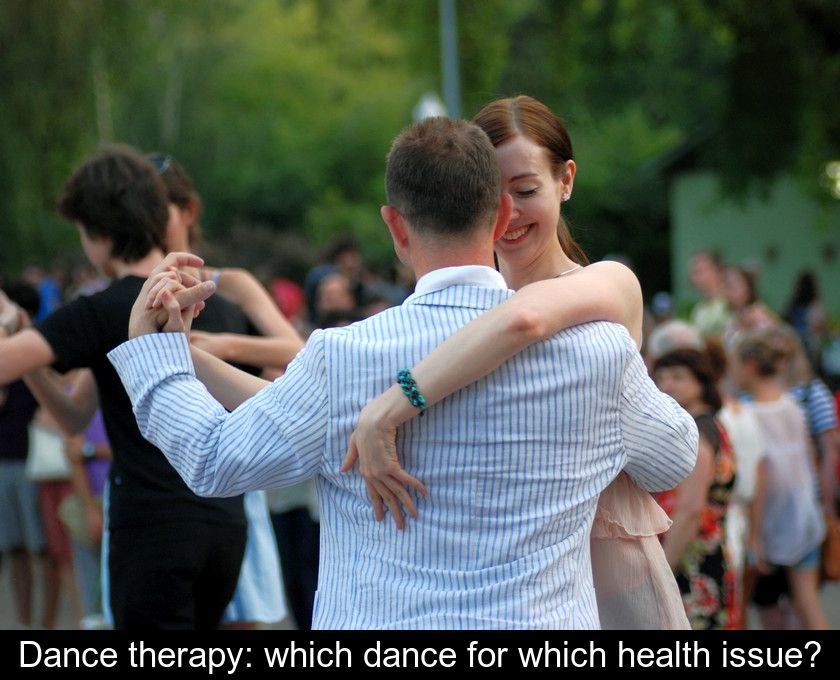Dance Therapy: Which Dance For Which Health Issue?
Did you know that dance is not just a hobby or a means of expression but also a source of well-being? Today, more and more doctors recommend dance therapy as a complement to treatments for various chronic diseases, including arthritis and cancer. We will reveal which dance is beneficial for improving specific health issues.
1- Zumba against diabetes
Dancing is a particularly interesting physical activity for health because it engages both muscles and cognitive functions. It develops coordination, flexibility, and balance, as well as a sense of rhythm, memory, and emotional expression.
The benefits of dance therapy are well-established, especially since scientific studies have revealed the importance of certain disciplines in combating chronic illnesses.
In 2019, researchers from Terna Medical College in India discovered that zumba is more effective than brisk walking for regulating blood sugar in people with type 2 diabetes.
Zumba, which arrived in France in 2010, involves performing fitness and cardio movements to very rhythmic music. This dance is beneficial for people with diabetes because it leads to the immediate use of blood sugar by the muscles. It thus helps combat chronic hyperglycemia.
To enjoy the benefits of zumba on your blood sugar levels, you must have good physical condition beforehand. However, this discipline remains accessible to most people because choreographies can be adapted to the students' profiles, depending on their age and weight.
During the first zumba sessions, it is important to closely monitor your blood sugar. Since this cardio activity is quite intense, your body's response to the exertion may require an adjustment of your treatment.
2- Tango against knee or hip osteoarthritis
People who suffer from osteoarthritis often think that this condition prevents them from dancing. But that's wrong! A study conducted in 2023 by the University Hospital of Clermont-Ferrand on patients with knee or hip osteoarthritis demonstrated that tango helps reduce pain and improve the quality of life for osteoarthritic patients.
To benefit from tango's effects on osteoarthritis, one must practice this dance at least one hour per week with a teacher. Enrolling in a class is essential because repeated poor postures could worsen the symptoms of osteoarthritis.
Faced with this debilitating chronic disease, turning to dance therapy may seem surprising. But in reality, people with knee or hip osteoarthritis need to move regularly. Sedentary behavior is very harmful for these patients as it accelerates the loss of mobility.
Because it is a fun activity practiced in pairs, ballroom dancing encourages patients to move despite their pain. Another advantage: tango steps closely resemble walking. This particular dance thus contributes to the rehabilitation of patients in addition to physical therapy! It facilitates their movements in daily life, at home, when shopping at the supermarket, and even when driving their car.
Additionally, tango exercises memory and spatial awareness and promotes social connections. Its health benefits have been demonstrated in patients suffering from neurodegenerative diseases such as Parkinson's disease and Alzheimer's disease.
3- Pole dancing against depression
The benefits of dance are not limited to the body but also concern the brain and emotions. Dance therapy thus finds surprising applications in the field of psychiatry.
In a study published in September 2023, researchers from the University of Berlin examined the therapeutic interest of pole dancing. They highlighted a significant improvement in the psychological well-being of women who practice this dance for at least one hour per week.
Once associated with striptease, pole dancing has now gained its respectability, to the point that a French championship has been organized every year for nearly fifteen years. The benefits of this dance against depression are explained by the externalization of emotions and a sense of transgression that makes this activity particularly fun. This dance, with its somewhat sultry reputation, is a true remedy for sadness and gloom. It allows women who practice it to regain their self-confidence and the feeling of being attractive.
It should be noted, however, that pole dancing is aimed at patients suffering from mild to moderate depression and should be practiced in addition to medical follow-up and possible medication.
4- Oriental dance against anxiety
In the same vein, dance therapy is an interesting method for patients who suffer from anxiety and obsessive thoughts.
Oriental dance, in particular, is said to be especially effective in combating anxiety. Not only does it require the person to focus on the present moment, their movements, and the rhythm of the music, which blocks mental ruminations, but it also acts on the physical symptoms of anxiety.
Indeed, oriental dance is known to loosen the abdominal belt, the rib cage, and the perineum: areas that are often locked up by stress! For anxious individuals, the movements of oriental dance help to relax these different parts of the body and free up breathing.
5- Salsa against chemofog
As proof of the multiple applications of dance therapy, the practice of certain dances is now offered to patients suffering from cancer. Physical activity is recommended for patients as a complement to their treatment. Among the various possible sports, dance has the added benefit of promoting relaxation and the expression of emotions repressed after the diagnosis of the disease.
This is why the association Elles dansent has chosen to offer classes adapted to patients, focusing on joyful Afro-Caribbean dances such as bachata, salsa, and cha-cha-cha. These dances help bring joy back to patients and combat chemofog, which is the mental fog associated with chemotherapy. They also help patients reclaim their bodies after heavy treatments.
According to Aude Michon, the founder of this association, patients notice an improvement in just two or three sessions: fatigue decreases, falling asleep becomes easier, and concentration as well as spatial awareness improve. If you want to learn more about this wonderful initiative of adapted dance, I invite you to visit the official website of the association below.












